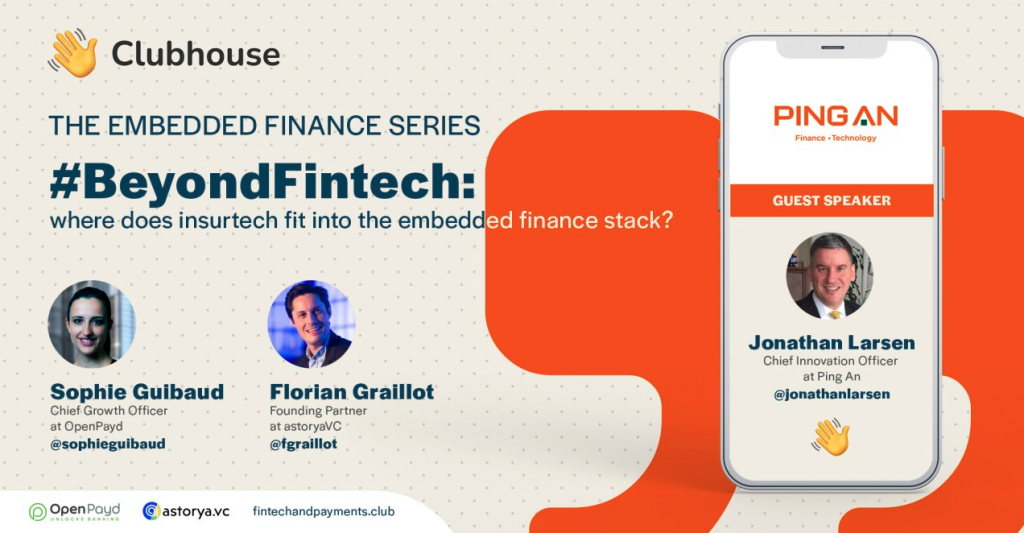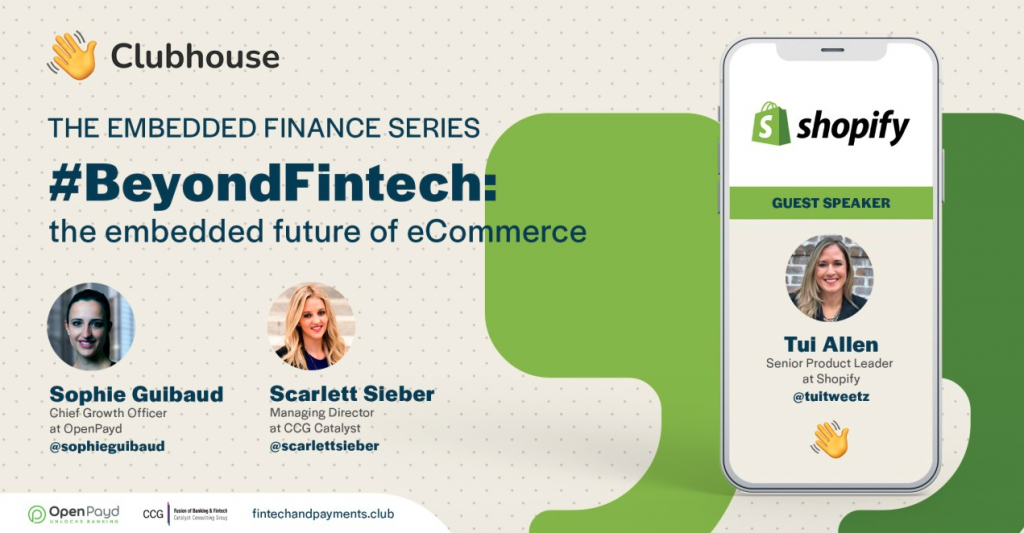
By Sophie Guibaud, Chief Growth Officer at OpenPayd ✨ BAAS & Embedded Finance
In the latest #BeyondFintech discussion for the Fintech and Payments Club on Clubhouse, I was able to speak to two great thought leaders about the topic of purpose-driven businesses and how this important trend is affecting banking and finance.
Theodora and Brad Leimer are the authors of ‘Beyond Good: How Technology is Leading a Purpose-Driven Business Revolution’ and the Founders of Unconventional Ventures. I was joined in this discussion by my co-moderator Darren Franks, the Founder and CEO of TalentintheCloud International.
If you weren’t able to join the conversation, here are the main topics we covered and the key learnings I took from it.
How banking needs to change
While energy companies have accepted they are the worst offenders when it comes to climate change and have turned to renewables in response, banking hasn’t had the same Aha moment about resolving financial inclusion. As a result, it can seem from the outside like only profit matters to these businesses. Current profits look obscene to many people and this needs to be talked about, with banks asking themselves “how much is enough?”
Big banks also need to address the fact that they no longer seem interested in wealth generation for most individuals. Already, around 15-20% of financial services have been ceded from large global banks to fintech, with the banks turning their focus to niches they view as profitable.
What is needed is more community banks, building societies and credit unions that are solving a fundamental local problem and have ‘doing good’ for the community embedded into their structures. Sunrise banks in the US are good examples of this because their employees reflect the people they serve, with half being female, 30% coming from communities of colour and 30% from a low or middle income background.
Embedded finance and fintech disruption
Embedded finance is all about bringing the core value of finance into another business model so it can empower the community. For example, purpose-driven businesses can bring the store of value service that banking provides to a community that needs it most. The banking and finance elements disappear almost entirely so that what is left is the value being delivered.
In this way, embedded finance can help to bring financial management tools to the mass market. This seems like a real missed opportunity right now even though it can be done profitably. If finance providers are willing to help individuals grow over the long-term, they can also grow their profits alongside the people they serve.
The key enabler in achieving this is how financial institutions embrace ‘empathy as a service’. This will lead to real disruption, rather than the type that many fintech startups claim to champion. After all, what is disruptive about offering a new credit card if the structures at the back-end are exactly the same?
Purpose-driven businesses to follow
Companies like Patagonia and Ben & Jerry’s were founded on the principles of ‘doing good’ and have this embedded into their structures. As a result, it doesn’t require a PR disaster or investigation to occur for it to take the spotlight.
Right now, the technology giants who leverage personal data for their advertising businesses demonstrate the models to avoid if you want to be purpose-driven. In finance though, there are already examples of companies and individuals who are showing the way forward.
These include organisations like Mojaloop, the open source software foundation creating financial inclusion through interoperable payment systems, which is clearly dedicated to who it serves and why it serves them. The foundation’s Chairperson, Konstantin Peric, is a great example of someone who has moved up through the financial system but always focused on broadening who is served by finance how this is achieved.
What leaders can do to help
Over the past year, when many economies have experienced a recession and many people have lost their jobs, the image of CEOs receiving record pay is not a good one. Therefore leaders who want to start a purpose-driven revolution in their businesses need to look at the people who are making the decisions. They should ask if these decision makers represent the people a business serves and whether they really know how to serve their community.
The truth is that everyone has leadership qualities in them but it requires strength of character to question an existing paradigm. The past year’s events have driven some to challenge the status quo but the onus should not be on individuals to fight their corner. It takes a village to change and it’s something that everyone is responsible for.
A leader’s mindset should be to set a course with a purpose and keep moving forward in that direction. If they don’t, they should be aware that their employees can and will move to make sure the changes they want to see do occur.
Want to follow more discussions like those?
1.Visit the Fintech & Payments club website to be informed of daily events. The Fintech & Payments club comprises 30,000 members and followers on Clubhouse, growing every day. We run events every day on a variety of Fintech topics!
2. Follow me on Linkedin for new updates and live session write-ups.
3. Subscribe to my substack to follow my new series Beyond Fintech, exploring how Brands leverage Fintech to unlock new growth opportunities.

